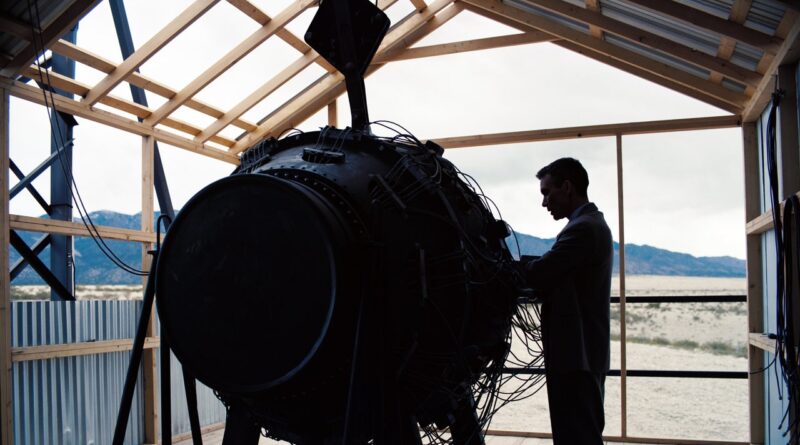Oppenheimer Historical Accuracy: A Historian Answers Your Lingering Questions
This article was originally published by Vogue.
If you’re a recent arrival to the planet and have yet to hear of Barbenheiming—i.e. the practice of going to see Greta Gerwig’s Barbie and Christopher Nolan’s Oppenheimer in quick succession, ideally within the space of 24 hours—then much of the current entertainment news cycle may seem foreign to you, as the two films completely dominate the box office (and the attention spans of seemingly everyone I know).
I didn’t relish seeing Oppenheimer, which is based on the 2005 biography American Prometheus by Kai Bird and Martin J. Sherwin, after Barbie (in retrospect, I should have swapped them and used Barbie as a kind of palate-cleansing, hot-pink mental sorbet), but once I had, I found myself with several lingering questions about the work of the real-life Manhattan Project and some of the figures depicted in the film. For answers, I turned to Cindy Kelly, founder and president of the Atomic Heritage Foundation; read her responses below.
What was J. Robert Oppenheimer’s wife Kitty’s profession?
Kitty was a biologist and was briefly a lab technician at Los Alamos under the supervision of Dr. Louis Hempelmann (in charge of the hospital and workers’ health), but quit after a year. As a trained botanist, Kitty felt stymied professionally at Los Alamos, and instead she led an active social life. She often hosted cocktail parties for small groups of women to provide a distraction from the high-pressure environment of Los Alamos. Kitty was also an important confidant for her husband. Robert Oppenheimer trusted his wife completely and frequently sought her advice on a host of issues facing the Manhattan Project. Kitty and her husband relied on each other for a solid foundation in the chaotic years of the Project and in their newfound celebrity in the years to come.
What was Einstein’s exact involvement in the creation of the atomic bomb?
Einstein’s famous equation E=mc2 explains the tremendous energy contained in the nucleus of an atom that is released in an atomic bomb. Because he was the most famous scientist in the world, he was approached to write a letter to President Franklin D. Roosevelt. In August 1939, Einstein sent a letter to FDR warning him that Germany could be working on a weapon of tremendous destructive power and urging the United States to mount a similar effort. That effort eventually became the Manhattan Project. However, Einstein did not work directly on the atomic bomb project. Instead, Oppenheimer took Einstein’s ideas and theories and, based on them, directed the Manhattan Project scientists at Los Alamos to design and test an atomic bomb.
What kind of impact did the test have on local tribes and the neighboring towns around the Los Alamos?
There were Pueblo communities and Hispanic towns around the Los Alamos laboratory. Many of them were employed by the laboratory as construction workers, technicians, and support staff. The scientists also hired them for babysitters and housekeepers. The Trinity test was conducted 210 miles south of Los Alamos at the Alamogordo Bombing Range, an area known as the Jornada del Muerto. Hispanics and Mescalero Apache tribal members in New Mexico claim that the Trinity Test resulted in health problems for generations of those living near the site and are seeking compensation from the Federal government.
Is the Los Alamos town still there?
Yes! What was it used for after the development of the bomb? The laboratory continued its mission to conduct research into nuclear weapons and today employs 17,000 people working on national security issues. The Manhattan Project National Historical Park was established in 2015 at three sites: Los Alamos, NM, where scientists designed and built the bomb; Oak RIdge, TN, where huge factories produced enriched uranium, the fuel for the Hiroshima bomb; and Hanford, WA, where first-of-a-kind reactors produced plutonium for the Nagasaki bomb. You can visit the historic Manhattan Project sites at Los Alamos including many shown in the film Oppenheimer.




